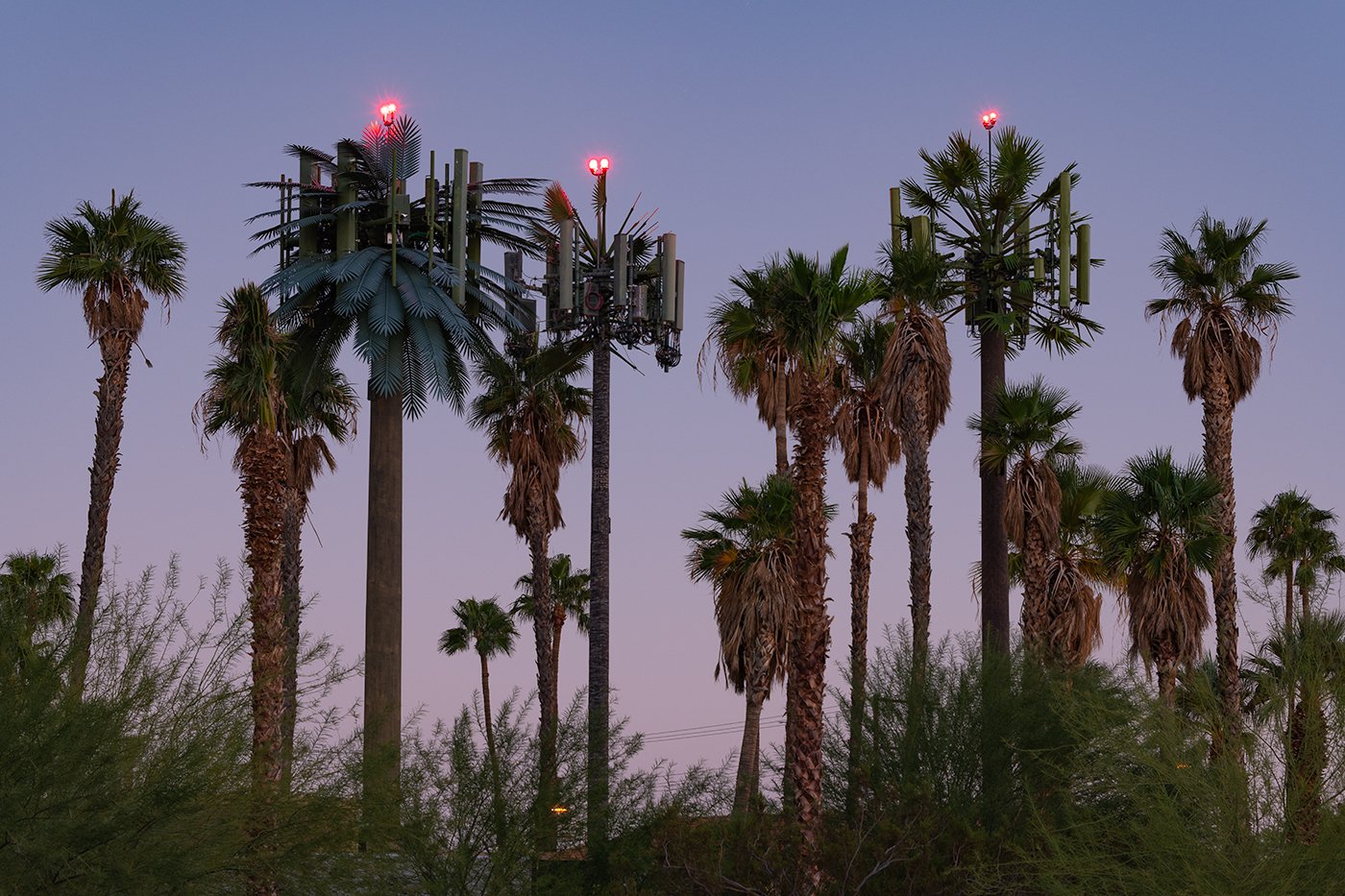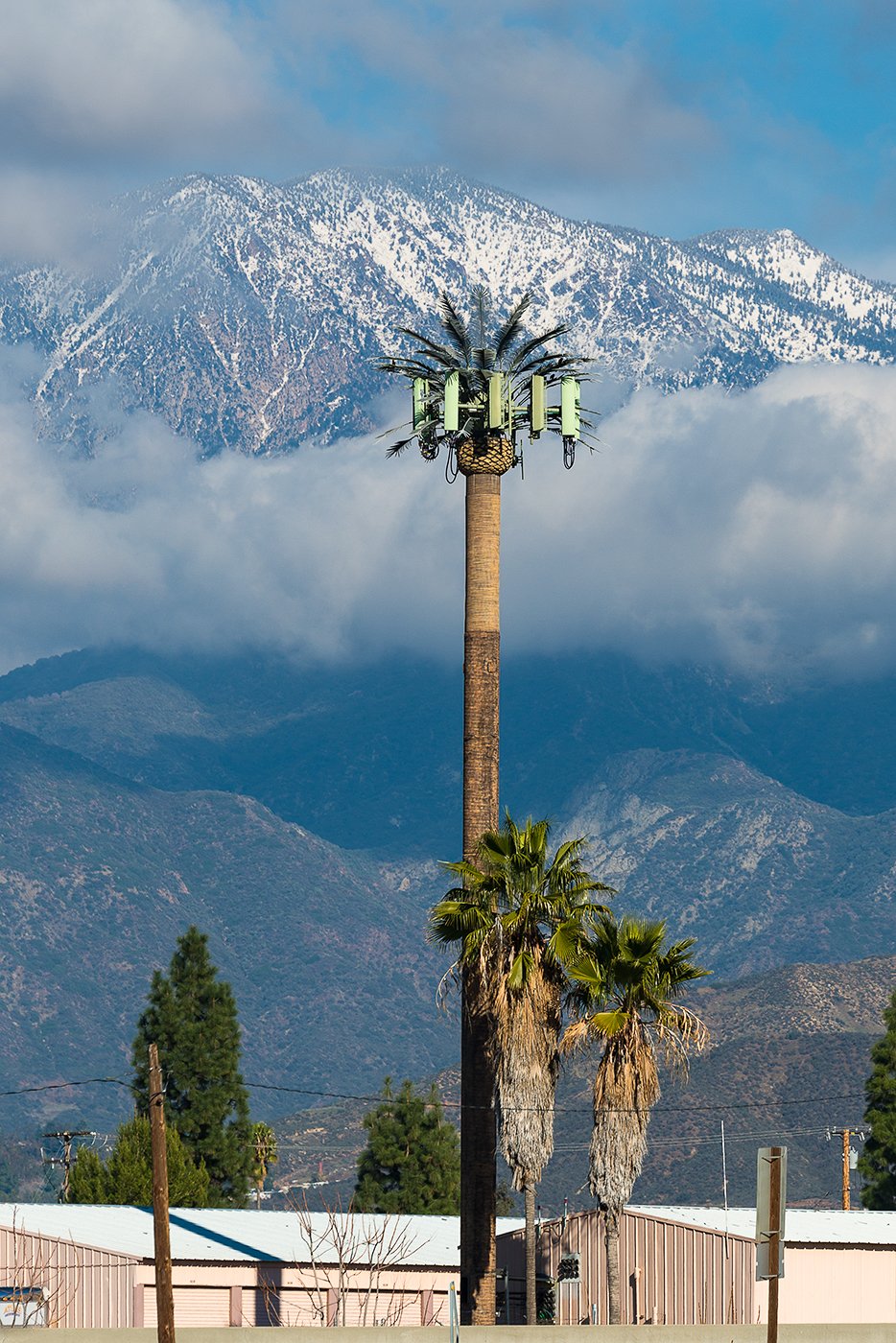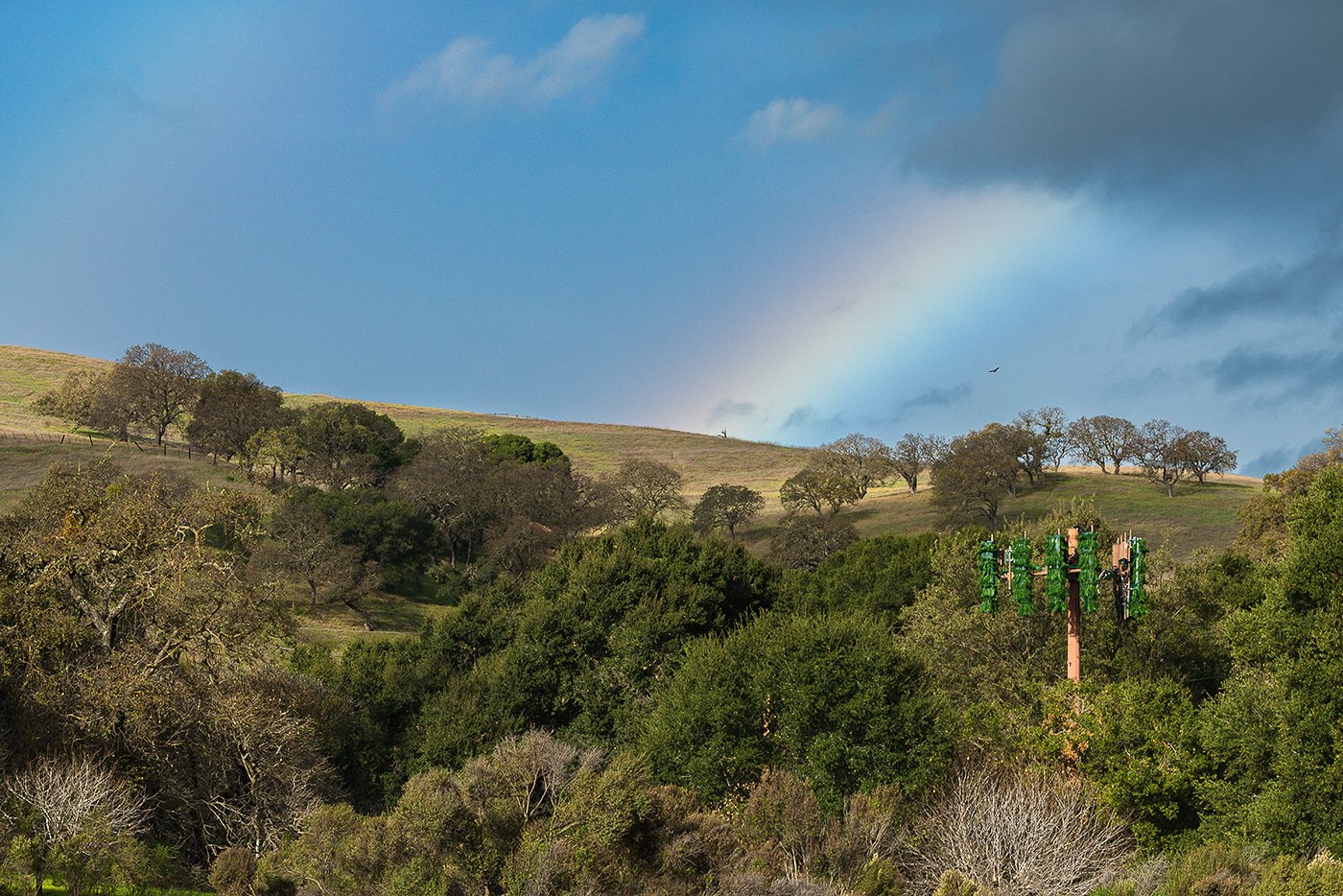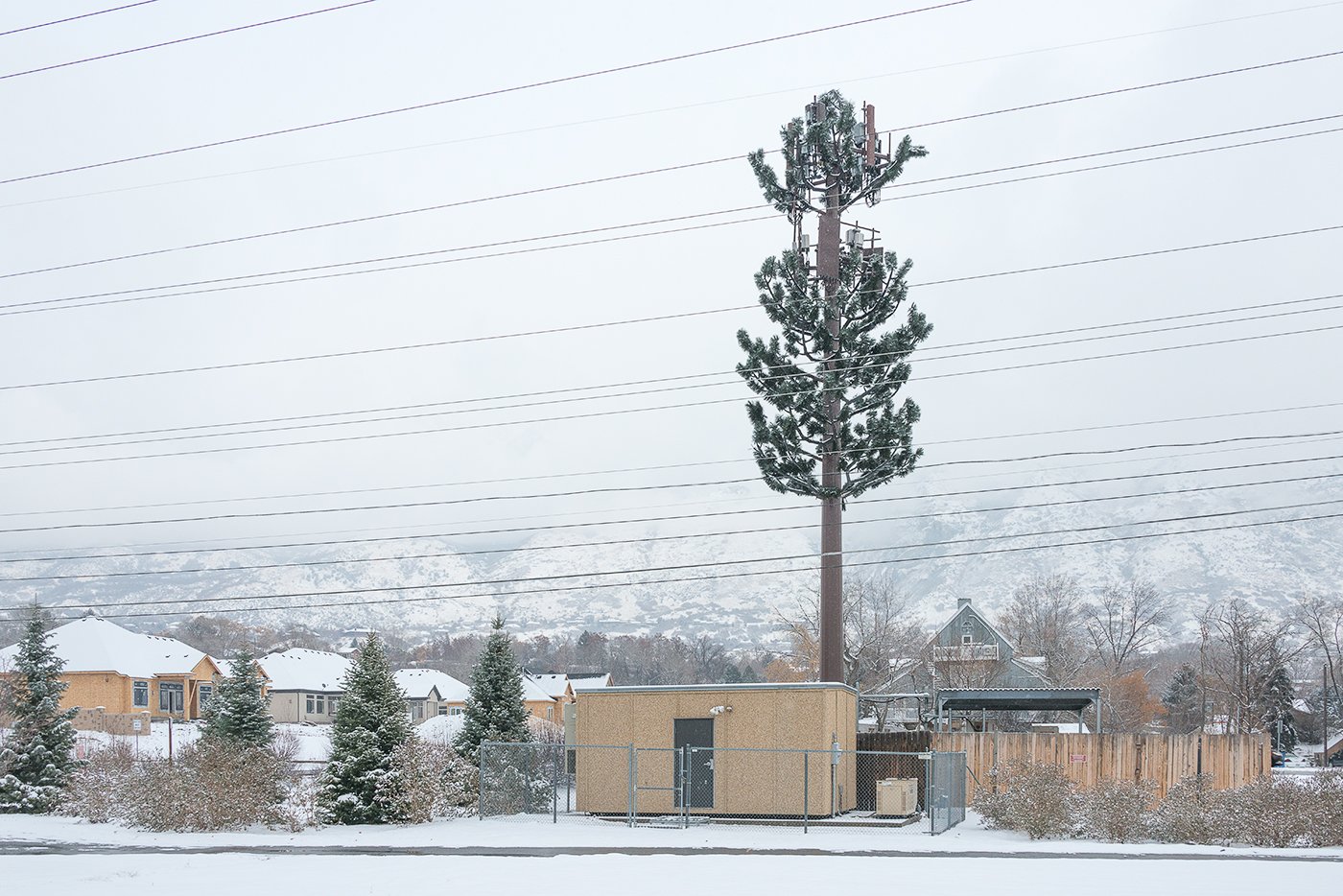Annette LeMay Burke
California, USA • atelierlemay.com





-
Fauxliage: Disguised Cell Phone Towers of the American West
First created to decrease visual pollution and blend in with the environment, disguised cell phone towers have become an accepted yet contrived aesthetic in our neighborhoods and landscapes. I embarked on a series of road trips across the American West to document the variety of tower designs and to explore the question – how much of an ersatz landscape and manufactured nature are we willing to accept in exchange for good cell service?
As disguised cell phone towers proliferate, I find it ironic that instead of providing camouflage, their disguises actually unmask their true identities. The towers have an array of creative concealments. They often impersonate trees such as evergreens, palms, and saguaros. Some pillars serve other uses such as flagpoles or iconographic church crosses. Generally, the towers are just simulacra. They are water towers that hold no water, windmills that provide no power, and trees that provide no oxygen. Yet they all provide five bars of service.
The faux trees, particularly the conifer models, pose an additional environmental problem. As the trees weather and age, the plastic needles break down into tiny pieces and litter the ground beneath the trees. These plastic particles can easily enter the ecosystem. What started as an attempt to reduce visual pollution is now creating plastic pollution.
The quaint masquerades do obscure one thing—the cellular equipment’s covert ability to collect all the personal data transmitted from our cell phones. Big tech and the government are always listening (and buying, selling, and storing).
As our dependence on quality cell service increases (as was evidenced by our reliance on remote connectivity during the COVID-19 lockdowns), this strange facet of the built world will continue to proliferate and encroach on the natural world.

© Daesung Lee
